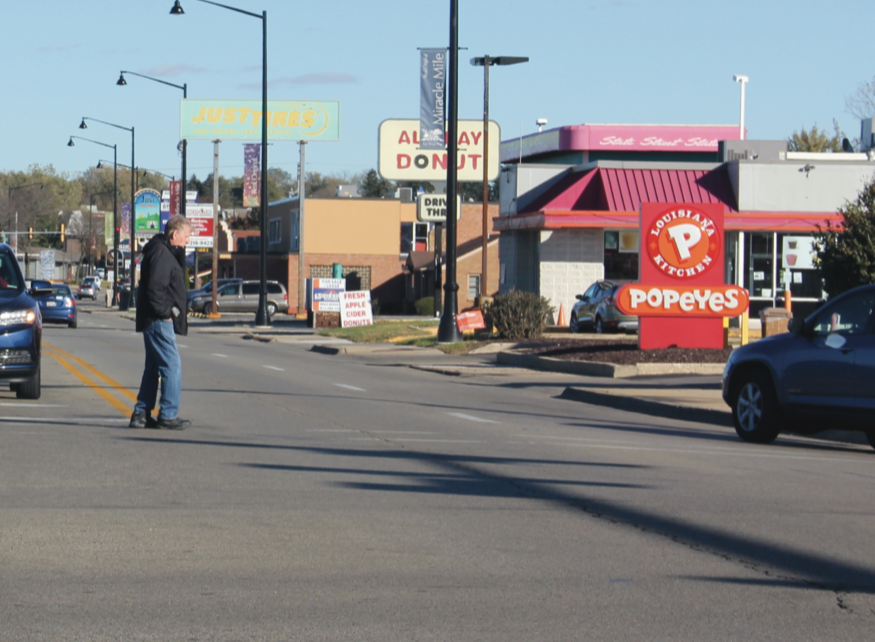Sponsored post: Spin and Better Block Foundation are calling on designers, urbanists and anyone who cares about safe and livable streets, to submit ideas for a new generation of multimodal parklets. Winning designs will get built and installed in Denver in September. Let’s take back our streets from cars, one space at a time. Apply now: https://www.spin.pm/streets
People are struggling to explain the alarming rise in pedestrian deaths, which reached a generation-long high in 2018. Cell phone use, especially by pedestrians, is often floated as the explanation.
It's easy to see why this theory is popular. Pedestrian deaths started rising in 2009 about the time smart phones began becoming ubiquitous.
But distracted walking — you hear the terms "zombie pedestrians," or "petextrians" thrown around — probably isn't the explanation for the additional 2,000 pedestrian deaths last year compared to a decade ago.
In general, in the U.S., pedestrians aren't getting killed in the kind of situations where the average person might feel comfortable glancing down at the Twitter app. Here are some reasons:
Most pedestrians are killed at mid-block
People don't text while sprinting across six-lane state highways in suburban Atlanta to catch the bus. But that's the kind of situation where lots of pedestrians get killed.
Only about a quarter of pedestrian deaths happen at intersections, according to the Federal Highway Administration. This isn't definitive evidence that those people weren't texting or distracted by a cell phone, but it does suggest that the circumstances at the time they were struck were not relaxed, boring strolls that would tempt someone to glance at a phone.
They are killed on wide, high-speed roads
Pedestrian deaths tend to be clustered in just a few areas. For example, in Philadelphia, more than 10 percent of all the traffic fatalities occur on just one street.
This data points to the importance of poorly designed or infrastructure in the problem. According to Transportation for America, 60 percent of pedestrian fatalities occur on "arterial" roads where the speed limit was 40 mph or higher.
Most are being killed at night
Three out of four pedestrians are struck and killed by cars at night, according to the Federal Highway Administration [PDF]. In these cases visability seems to be the biggest factor, and a glowing phone might even improve that problem.
Many people being killed are elderly, poor
The demographic profile of who is being killed in pedestrian crashes just doesn't match up very well with the demographic that is stereotypically glued to phones. Elderly folks, lower-income people and immigrants all make up a disproportionate share of those killed in pedestrian crashes.
Certainly, many low-income people have smartphones, but the people in the deepest poverty seem to be at the highest risk. Some evidence shows that homeless people represent a surprisingly large share of these fatalities.
Other explanations
Other demographic and social trends — gentrification, migration to the sun belt, the rise of SUVs and the aging of the American populace — are more likely culprits that explain the rising number of pedestrians being killed since 2009.
Moreover, this problem cannot be addressed by deflecting blame back on the victims. For any solution to have a real chance of success, it will have to start with empathy for the victims and working to understand the structural causes — and that begins and ends with discussions of the destructive power of increasingly big cars and bad road design.
Streetsblog USA National Editor Angie Schmitt is working on a book about the startling rise in pedestrian deaths. It is expected to be published next year.






